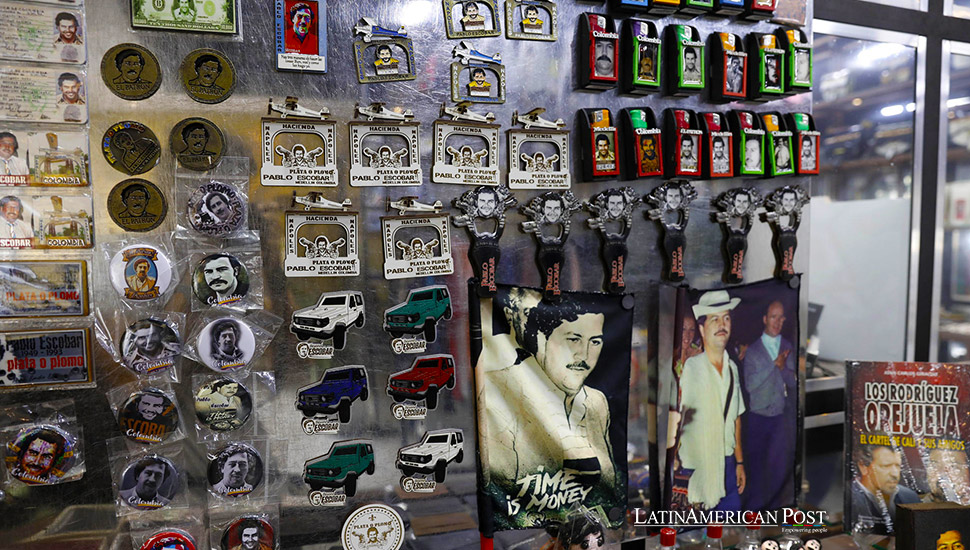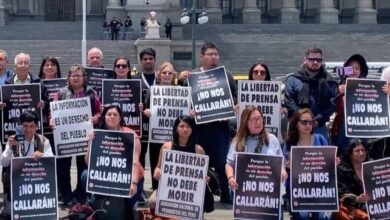Medellín: A Tourist Haven Still Grappling with Violence

Medellín, Colombia’s vibrant city of transformation, remains a popular tourist destination despite ongoing struggles with violence. Recent incidents highlight the persistent dangers that lurk beneath the surface of this evolving urban landscape.
Medellín, once notorious as the epicenter of Pablo Escobar’s drug empire, has worked tirelessly to shed its violent past. The city has transformed remarkably over the past two decades, symbolizing urban renewal and innovation. Today, Medellín is celebrated for its thriving arts scene, modern infrastructure, and welcoming atmosphere. Tourists flock to the city to explore its vibrant neighborhoods, enjoy its lively nightlife, and experience its rich cultural heritage.
However, despite these positive developments, Medellín grapples with a darker side that refuses to disappear. Recent incidents of violence serve as a stark reminder that the city’s progress is fragile, and its past is never far from the present. The juxtaposition of Medellín’s bright new image with the shadows of its violent history creates a complex narrative for residents and visitors.
A New Wave of Violence
In a disturbing turn of events, a Colombian judge recently ordered pre-trial detention for four members of a criminal gang accused of kidnapping, robbing, and torturing women in Medellín. The arrests of Miguel Ángel Botero Mosquera, María Paula Sierra Alba, William Samuel Suárez Rubiano, and David Alonso García Restrepo have shocked the city and reignited fears about the persistence of violence.
Between December 17, 2023, and April 1, 2024, the gang allegedly kidnapped eight women in various neighborhoods of Medellín, including El Poblado, Suramericana, Laureles, El Rodeo, Belén, and Robledo. The victims were lured through social media platforms with offers for services such as massages or companionship. Upon arriving at the specified locations, the women were stripped, bound, and beaten, forced to reveal the passwords to their phones and banking apps.
According to the Colombian Prosecutor’s Office, the torture inflicted on the victims was severe, including burning various parts of their bodies and subsequently pouring alcohol on the wounds. In all eight cases investigated by authorities, the gang reportedly stole over 80 million pesos (approximately $19,800 or 18,000 euros) in cash, jewelry, and personal belongings.
The four suspects now face charges of theft, conspiracy to commit a crime, extortionate kidnapping, and torture—charges that they have denied. The case has sent shockwaves through Medellín, raising concerns about the safety of residents and visitors alike.
Medellín’s Ongoing Struggle with Crime
A dramatic reduction in crime marks Medellín’s recent history, thanks to comprehensive urban planning and social programs to reduce violence. The city’s transformation from the world’s most dangerous city in the 1990s to a model of urban innovation has been widely celebrated. Medellín’s Metrocable system, public libraries, and community centers have been instrumental in integrating marginalized neighborhoods and providing opportunities for at-risk youth.
However, despite these advances, crime and violence remain significant challenges. Though less visible than during Escobar’s reign, organized crime continues to exert influence in the city. Various criminal groups, often referred to as “combos,” control different territories within Medellín, engaging in drug trafficking, extortion, and other illegal activities.
The recent kidnappings and torture of women underscore the persistent threat posed by these criminal elements. While Medellín’s homicide rate has decreased substantially since the 1990s, other forms of violence, such as gender-based violence and extortion, remain prevalent. Therefore, the city’s image as a safe and modern destination is complicated by these ongoing issues.
Tourism has become vital to Medellín’s economy, drawing visitors worldwide. Tourists are attracted by the city’s temperate climate, picturesque landscapes, and dynamic cultural scene. From the vibrant street art of Comuna 13 to the serene gardens of Parque Arví, Medellín offers a diverse array of experiences that cater to all types of travelers.
However, the recent incidents of violence have raised questions about the safety of tourists in Medellín. While the city’s main tourist areas, such as El Poblado and Laureles, are generally safe, crime can still occur, particularly in less-policed neighborhoods. The fact that the recent kidnappings took place in well-known areas frequented by tourists has heightened concerns.
The Colombian government and local authorities have improved security in tourist areas, but the challenges are ongoing. Tourists visiting Medellín are often advised to exercise caution, avoid risky situations, and remain aware of their surroundings. The balance between promoting tourism and ensuring safety remains delicate for the city.
Gender-Based Violence: A Persistent Issue
The recent crimes in Medellín also highlight the broader issue of gender-based violence in Colombia. Women in the country, particularly in urban areas, continue to face significant risks, with violence against women remaining a pervasive problem. The gender disparity in crime victimization is stark, with women more likely to be targeted for certain types of violence, including domestic violence, sexual assault, and human trafficking.
The Colombian government has implemented various measures to combat gender-based violence, including legal reforms and public awareness campaigns. However, cultural attitudes and systemic issues continue to impede progress. The recent case in Medellín illustrates the vulnerability of women, even in a city that has made significant strides in reducing overall crime.
The treatment of the victims in this case and the brutality of the crimes committed against them have sparked outrage and calls for more decisive action to protect women in Medellín and across Colombia. Advocates are pushing for more robust law enforcement, better support services for victims, and continued efforts to change societal norms that tolerate or even condone violence against women.
The Role of Social Media in Crime
The Medellín case also sheds light on the evolving nature of crime in the digital age. The suspects allegedly used social media platforms to lure their victims, a tactic that has become increasingly common in recent years. As more people use social media to connect, criminals have found new ways to exploit these platforms for illegal activities.
This trend is not unique to Medellín or Colombia; it is a global issue that law enforcement agencies are grappling with. The use of technology in crime presents new challenges for authorities, who must keep pace with rapidly changing methods of criminal activity. In response, there is a growing emphasis on cybercrime units, digital forensics, and public awareness campaigns aimed at educating people about the risks of online interactions.
In Medellín, the case has prompted discussions about the need for greater regulation of social media platforms and the importance of digital literacy for both young people and adults. As the city continues to modernize, the integration of technology into daily life will require a parallel effort to ensure that these advancements do not come at the expense of public safety.
Balancing Growth and Security
Medellín’s transformation is a testament to the city’s resilience and the determination of its people to overcome a troubled past. The city’s progress has been remarkable, and its emergence as a global tourist destination is a source of pride for many Colombians. However, the recent incidents of violence serve as a sobering reminder that Medellín’s journey is far from complete.
The challenge for Medellín moving forward will be to maintain the momentum of its positive developments while addressing the underlying issues that continue to threaten its security. This will require a multi-faceted approach that includes not only law enforcement but also social programs, education, and community engagement.
Tourism will remain a key part of Medellín’s economy, but ensuring the safety of visitors and residents alike will be crucial to sustaining this growth. The city must continue to invest in security measures, improve infrastructure in vulnerable neighborhoods, and foster a culture of respect and inclusion.
Medellín’s story is one of transformation, but it is also a story of ongoing struggle. The city’s ability to balance these two realities will determine its future. As Medellín continues to evolve, the hope is that it can fully realize its potential as a beacon of progress and peace, leaving behind the violence that has cast a long shadow over its past.
Medellín’s journey from a city plagued by violence to a hub of innovation and tourism is nothing short of remarkable. However, the recent crimes against women highlight the persistent challenges that remain. As Medellín continues to grow and attract tourists from around the world, the city must confront the realities of its ongoing struggles with violence and insecurity.
Also read: Petro’s Colombia Economic Gamble and the Uncertainty of Forced Investments
The road ahead for Medellín is one of balancing progress with vigilance. The city’s leaders and citizens must work together to ensure that the transformation Medellín has experienced over the past two decades is not undone by the resurgence of crime. By addressing these challenges head-on, Medellín can continue to build a future that honors its past while embracing the opportunities of tomorrow.





